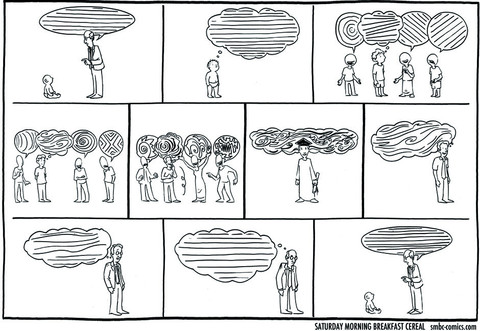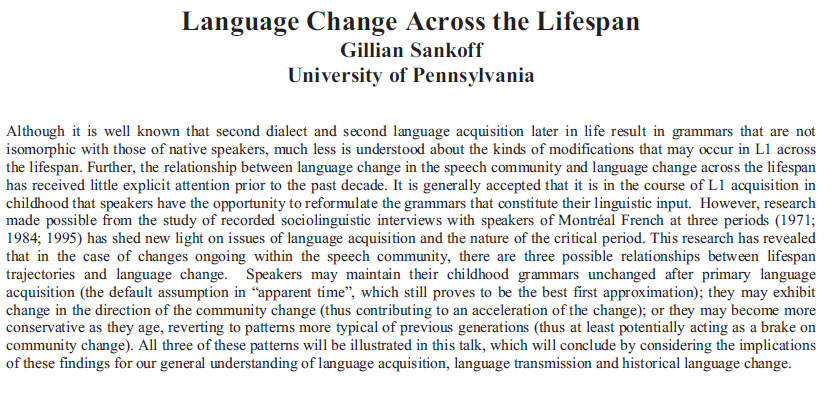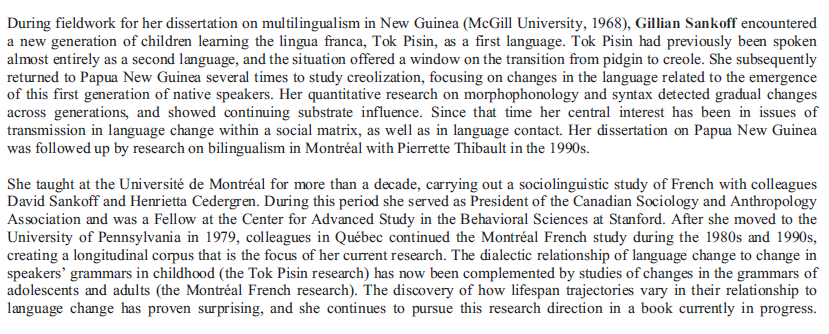Language change across the lifespan
« previous post | next post »
One theory, anyhow:

This is an old SMBC comic, now available as a poster.
There are other developmental trajectories, several of which were discussed in Gillian Sankoff's plenary lecture at the recent LSA meeting:
I should note that Zach Weiner calls his strip "The Life of Thought", which is a broader topic.


Narmitaj said,
January 7, 2013 @ 2:39 pm
The imposed language context of this cartoon reminded me of a TV show over Christmas, in which Sue Perkins looked into the stories behind and around The Sound Of Music. In it she spoke to the only survivor of the original seven von Trapp children, Maria Franziska, who is now 98. She's been in the USA most of the time since 1938 but can no longer speak English, though she can still speak German and play the accordion. I don't know how well she got to know English in the first place, but her stepmother, the famous Maria, was shown in various clips speaking it fluently so I imagine the younger Maria had been at least competent if not fluent too.
Here Perkins writes in the Radio Times about making the programme (though she doesn't mention the younger Maria; a reviewer mentions her in passing at http://digitaljournal.com/article/340145 ).
Language Log » Language change across the lifespan | Metaglossia said,
January 8, 2013 @ 3:01 am
[…] on languagelog.ldc.upenn.edu About these ads GA_googleAddAttr("AdOpt", "1"); GA_googleAddAttr("Origin", "other"); […]
languagehat said,
January 8, 2013 @ 9:43 am
I don't take that as being about language but about thoughts; we go out into the world, meet interesting people from different backgrounds and have our thought processes complicated, swirled around as it were, but as we grow old we find ourselves falling back on the eternal verities, which we duly share with our grandkids. I think my interpretation is provably correct, or more likely correct, because the "language" interpretation implies that young children wind up (after a period of experimentation) speaking in the same way as their grandparents, which is absurd on the face of it.
GT said,
January 8, 2013 @ 2:16 pm
@languagehat
I think the comic supports your interpretation — thoughts and speech are distinguished through the different balloons.
Nicholas Waller said,
January 8, 2013 @ 3:53 pm
The original post also supports languagehat's interpretation: "I should note that Zach Weiner calls his strip "The Life of Thought", which is a broader topic."
Matt said,
January 9, 2013 @ 7:24 am
I had a similar reaction to M. Hat, except that based on facial expressions, posture etc. I thought that the straight lines were meant to represent closed-mindedness and loss of interest in new ideas rather than the eternal verities. (Assuming that "eternal verities" wasn't meant as irony.)